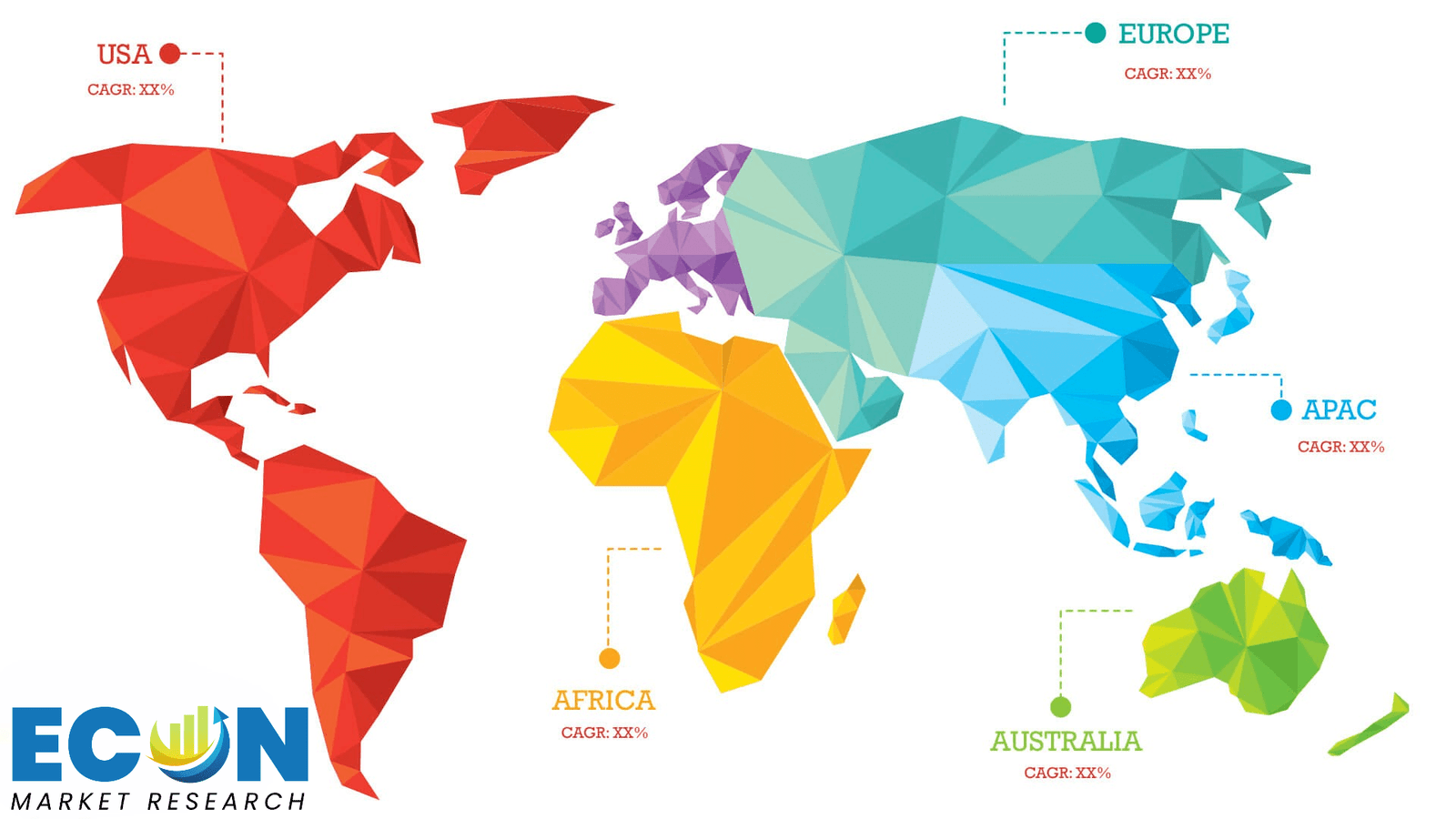Cold Cuts Market Size, Share, Trends, Growth, and Industry Analysis, By Product (Deli cold cuts and Packaged cold cuts), By Distribution Channel (Online and Offline), Regional Analysis and Forecast 2033.
Global Cold Cuts Market size was USD 287.37 billion in 2024 and the market is projected to touch USD 414.74 billion by 2033, at a CAGR of 4.69% during the forecast period.
Cold cuts are also referred to as deli meats or luncheon meats, which include items such as ham, salami, turkey, and bologna. These are often used in sandwiches, wraps, salads, or as part of appetizers. Demand for cold cuts has increased due to their convenience, long shelf life, and the growing popularity of ready-to-eat meals, especially among busy consumers and working professionals.
Increasing demand for processed and ready-to-eat foods among consumers, coupled with a shift in dietary patterns and increased disposable incomes in developing markets, are also drivers of the market. Further, new innovations like vacuum-sealing packaging enhance product shelf life and quality, increasing the attractiveness of cold cuts. The challenges to the market arise from health concerns due to the high sodium and fat content of some cold cuts and competition from plant-based alternatives. Despite this, the market for cold cuts is growing with the increasing demand for quick and convenient food options across both developed and developing regions
Cold Cuts Report Scope and Segmentation
|
Report Attribute |
Details |
|
Estimated Market Value (2024) |
USD 287.37 Billion |
|
Projected Market Value (2033) |
USD 414.74 Billion |
|
Base Year |
2024 |
|
Historical Year |
2018-2023 |
|
Forecast Years |
2025 – 2033 |
|
Scope of the Report |
Historical and Forecast Trends, Industry Drivers and Constraints, Historical and Forecast Market Analysis by Segment- Based on By Product, By Distribution Channel, & Region. |
|
Segments Covered |
By Product, By Distribution Channel, & By Region. |
|
Forecast Units |
Value (USD Million or Billion), and Volume (Units) |
|
Quantitative Units |
Revenue in USD million/billion and CAGR from 2025 to 2033. |
|
Regions Covered |
North America, Europe, Asia Pacific, Latin America, and Middle East & Africa. |
|
Countries Covered |
U.S., Canada, Mexico, U.K., Germany, France, Italy, Spain, China, India, Japan, South Korea, Brazil, Argentina, GCC Countries, and South Africa, among others. |
|
Report Coverage |
Market growth drivers, restraints, opportunities, Porter’s five forces analysis, PEST analysis, value chain analysis, regulatory landscape, market attractiveness analysis by segments and region, company market share analysis. |
|
Delivery Format |
Delivered as an attached PDF and Excel through email, according to the purchase option. |
Dynamic Insights
One of the major growth drivers is an increased preference for convenience foods, as the busy lifestyles make consumers seek faster, ready-to-eat meal options. It is driven mainly by the expanding working population in urban areas that increases the intake of cold cuts in sandwiches, salads, and other ready-to-eat meals. Moreover, advances in packaging technology, which include vacuum sealing and modified atmosphere packaging, continue to extend the shelf life while also making the cold cuts appealing due to its freshness and flavor preservation.
On the other hand, health issues associated with high sodium, preservatives, and fat content in processed meats are restraining the growth of the market. As consumers become more health-conscious, demand for healthier alternatives, such as leaner meats, reduced-sodium options, and plant-based substitutes, is increasing. Environmental sustainability concerns are also driving some consumers to look at plant-based cold cuts as a more sustainable alternative. Despite these challenges, the market will grow because manufacturers are now promoting healthier options, getting better quality products, and are entering emerging markets with growing disposable incomes. The future growth of cold cuts in the coming years will be propelled by changing eating habits and a need for easy meal solutions.
Drivers Insights
One of the key drivers of the global cold cuts market is the rising demand for convenience foods. As modern lifestyles become busier, more consumers are seeking time-saving meal options that require minimal preparation. Cold cuts, ready-to-eat and easy to incorporate into various dishes like sandwiches, wraps, and salads, have become a go-to choice for working professionals, students, and busy families. Another aspect is that cold cuts are convenient and hence very portable; they are an excellent choice for packed lunches, fast food on the go. Therefore, this market for cold cuts is increasingly expanding, mainly in urban regions where convenience ranks first in choosing food for everyday life.
Packaging technology has also evolved in the last decade with improvements such as vacuum sealing and modified atmosphere packaging. This technology helps increase the shelf life of the products, allowing the products to be fresher for a longer time, reducing waste, and therefore, building confidence in purchasing cold cuts among consumers. Also, the storage, transport, and general safety of the product have improved due to the development in packaging. Therefore, these packaging solutions have added to the convenience and availability of cold cuts throughout retail and foodservice sectors. These have added support to growth in the global market.
Restraints Insights
The biggest restraint in the cold cuts market is the rising health issues of processed meats. Cold cuts are rich in sodium, fat, and preservatives, which increases health issues such as high blood pressure, cardiovascular diseases, and obesity when taken in excess. With increasing health awareness, there is a move towards healthier food alternatives. The growing awareness concerning the dangers linked to processed meats has resulted in a decrease in demand, particularly among health-conscious consumers and people with dietary restrictions. This problem has forced producers to create healthier alternatives, yet it is one of the key restraints on the market.
Growing popularity of plant-based and vegan diets is one other restraint hindering the market of cold cuts. Consumers move away from the use of products containing animals mainly because of their ethics, health, or the environment. A large number of these consumers lead to an increased demand for substitutes based on plant origin, even in deli meats. Substitutes tend to be regarded as healthier or environmentally friendly alternatives and thus form a competitive threat for traditional cold cuts. Therefore, in cases of high plant-based consumers in the markets, a slower growth for the old cold cuts will be witnessed due to more consumers opting for alternative plant-based options.
Opportunities Insights
Growing consumer demand for healthier food options will be a great opportunity for the cold cuts market. Manufacturers can capitalize on this trend by introducing products that are lower in sodium, fat, and preservatives, and offering leaner meat options. The opportunity also exists to introduce organic and antibiotic-free cold cuts as consumers increasingly seek products that align with their health-conscious lifestyles. High-protein, low-carb cold cuts can also be developed for specific diets, such as keto and paleo diets, which can help brands tap into niche markets and increase their market share.
Segment Analysis
The cold cuts market is segmented into two primary product categories: deli cold cuts and packaged cold cuts. Deli cold cuts are usually pre-sliced, freshly prepared meats sold in butcher shops or deli counters. They can be found in a variety of flavors, such as ham, turkey, salami, and bologna, and are cut to the consumer's desired thickness. Deli cold cuts are highly customizable and fresh since they are prepared and served in-store.
In contrast, packaged cold cuts are pre-sliced and pre-packaged products that can be found in grocery store aisles, offering the convenience of long shelf life due to advanced packaging methods like vacuum sealing or modified atmosphere packaging. Packaged cold cuts are widely available and cater to an increasing consumer demand for ready-to-eat products with extended shelf life. The rise in online grocery shopping and preference for convenience has helped packaged cold cuts gain popularity in comparison to deli cold cuts.
The primary channels used in the distribution of cold cuts are offline and online. Offline distribution refers to the traditional retail model where cold cuts are purchased through physical stores, including supermarkets and grocery stores, and butcher shops. Offline remains the most leading retail across the cold cuts market because the consumers often find a need to see, touch, and choose their preferred products, especially with deli cold cuts. In addition, in-store has the added benefit of freshness and direct customer service.
However, online distribution is also gaining popularity day to day due to the increasing trend of e-commerce and home delivery services. Online venues also provide the facility of shopping from one's homes more conveniently, especially in the ongoing trend of digitalization and the demand for quick, convenient food options. Online stores allow consumers to order packaged cold cuts, with options for home delivery and subscription-based models for regular supplies. Though offline retail is still larger in terms of market share, the shift toward online shopping, driven by convenience and changing consumer behaviors, is expected to significantly shape the cold cuts market in the coming years.
Regional Analysis
In North America, especially the United States, the cold cut ranks among a host of common components in most people's diet; the business also has two equally well-set up markets-delicatessen or packaged, whose demand also fuels busy lifestyle needs and trends, as is commonly seen more toward ready-to-eat products. The market in Europe is also robust with consumers from Germany, France, and Italy demanding cold cuts as an important part of consumers' diets with a great prevalence for sandwiches and other deli products. In Europe, besides a history of meat consumption, the variety within the regional brands is significant, and the number of regional brands offering diversified variants of cold cuts to suit local tastes is vast.
Although in the early stages of growth, the cold cuts market is expanding rapidly in the Asia-Pacific region. It is because of urbanization, increasing disposable incomes, and a shift towards a Westernized food culture. The demand for cold cuts has been growing in countries like China, Japan, and India as more consumers opt for convenient, ready-to-eat products. The growth of supermarkets and online grocery shopping in these regions has also contributed to the market's growth. In Latin America, the cold cuts market is growing steadily, with countries such as Brazil and Mexico leading the demand, driven by changing eating habits and greater exposure to Western food culture. The Middle East and Africa are emerging markets for cold cuts, driven by urbanization and the increased availability of international food brands. However, in some regions, health concerns and competition from plant-based alternatives will challenge the sector, although the overall outlook remains positive.

Competitive Landscape
Major companies such as Tyson Foods, JBS S.A., and Hormel Foods have dominated the market due to their vast product portfolios, strong brand recognition, and extensive networks. Their product portfolio for cold cuts includes deli meats and packaged products to suit different consumer preferences. They also invest highly in innovations like healthier alternatives, organic products, and advanced packaging solutions to keep up with the evolving demands of health-conscious consumers. Moreover, they benefit from economies of scale, which help them maintain competitive pricing and reach consumers on a global scale.
At the same time, regional and local players focus on niche markets and specific consumer preferences, offering unique varieties of cold cuts according to local tastes and dietary habits. For instance, European brands may offer traditional options such as prosciutto, while Latin American companies focus on locally preferred cold cuts like chorizo and salami. The popularity of premium and artisanal cold cuts has also led to opportunities for smaller producers to thrive with consumers who increasingly look for higher-quality fresh and organic products. Increasing demand for plant-based diets has also led certain companies entering the market offering vegan or plant-based deli meats that are sustainable and healthy.
List of Key Players:
Global Cold Cuts Report Segmentation
|
ATTRIBUTE |
DETAILS |
|
By Product |
|
|
By Distribution Channel |
|
|
By Geography |
|
|
Customization Scope |
|
|
Pricing |
|
Research Methodology
Our research methodology has always been the key differentiating reason which sets us apart in comparison from the competing organizations in the industry. Our organization believes in consistency along with quality and establishing a new level with every new report we generate; our methods are acclaimed and the data/information inside the report is coveted. Our research methodology involves a combination of primary and secondary research methods. Data procurement is one of the most extensive stages in our research process. Our organization helps in assisting the clients to find the opportunities by examining the market across the globe coupled with providing economic statistics for each and every region. The reports generated and published are based on primary & secondary research. In secondary research, we gather data for global Market through white papers, case studies, blogs, reference customers, news, articles, press releases, white papers, and research studies. We also have our paid data applications which includes hoovers, Bloomberg business week, Avention, and others.

Data Collection
Data collection is the process of gathering, measuring, and analyzing accurate and relevant data from a variety of sources to analyze market and forecast trends. Raw market data is obtained on a broad front. Data is continuously extracted and filtered to ensure only validated and authenticated sources are considered. Data is mined from a varied host of sources including secondary and primary sources.

Primary Research
After the secondary research process, we initiate the primary research phase in which we interact with companies operating within the market space. We interact with related industries to understand the factors that can drive or hamper a market. Exhaustive primary interviews are conducted. Various sources from both the supply and demand sides are interviewed to obtain qualitative and quantitative information for a report which includes suppliers, product providers, domain experts, CEOs, vice presidents, marketing & sales directors, Type & innovation directors, and related key executives from various key companies to ensure a holistic and unbiased picture of the market.
Secondary Research
A secondary research process is conducted to identify and collect information useful for the extensive, technical, market-oriented, and comprehensive study of the market. Secondary sources include published market studies, competitive information, white papers, analyst reports, government agencies, industry and trade associations, media sources, chambers of commerce, newsletters, trade publications, magazines, Bloomberg BusinessWeek, Factiva, D&B, annual reports, company house documents, investor presentations, articles, journals, blogs, and SEC filings of companies, newspapers, and so on. We have assigned weights to these parameters and quantified their market impacts using the weighted average analysis to derive the expected market growth rate.
Top-Down Approach & Bottom-Up Approach
In the top – down approach, the Global Batteries for Solar Energy Storage Market was further divided into various segments on the basis of the percentage share of each segment. This approach helped in arriving at the market size of each segment globally. The segments market size was further broken down in the regional market size of each segment and sub-segments. The sub-segments were further broken down to country level market. The market size arrived using this approach was then crosschecked with the market size arrived by using bottom-up approach.
In the bottom-up approach, we arrived at the country market size by identifying the revenues and market shares of the key market players. The country market sizes then were added up to arrive at regional market size of the decorated apparel, which eventually added up to arrive at global market size.
This is one of the most reliable methods as the information is directly obtained from the key players in the market and is based on the primary interviews from the key opinion leaders associated with the firms considered in the research. Furthermore, the data obtained from the company sources and the primary respondents was validated through secondary sources including government publications and Bloomberg.
Market Analysis & size Estimation
Post the data mining stage, we gather our findings and analyze them, filtering out relevant insights. These are evaluated across research teams and industry experts. All this data is collected and evaluated by our analysts. The key players in the industry or markets are identified through extensive primary and secondary research. All percentage share splits, and breakdowns have been determined using secondary sources and verified through primary sources. The market size, in terms of value and volume, is determined through primary and secondary research processes, and forecasting models including the time series model, econometric model, judgmental forecasting model, the Delphi method, among Flywheel Energy Storage. Gathered information for market analysis, competitive landscape, growth trends, product development, and pricing trends is fed into the model and analyzed simultaneously.
Quality Checking & Final Review
The analysis done by the research team is further reviewed to check for the accuracy of the data provided to ensure the clients’ requirements. This approach provides essential checks and balances which facilitate the production of quality data. This Type of revision was done in two phases for the authenticity of the data and negligible errors in the report. After quality checking, the report is reviewed to look after the presentation, Type and to recheck if all the requirements of the clients were addressed.
